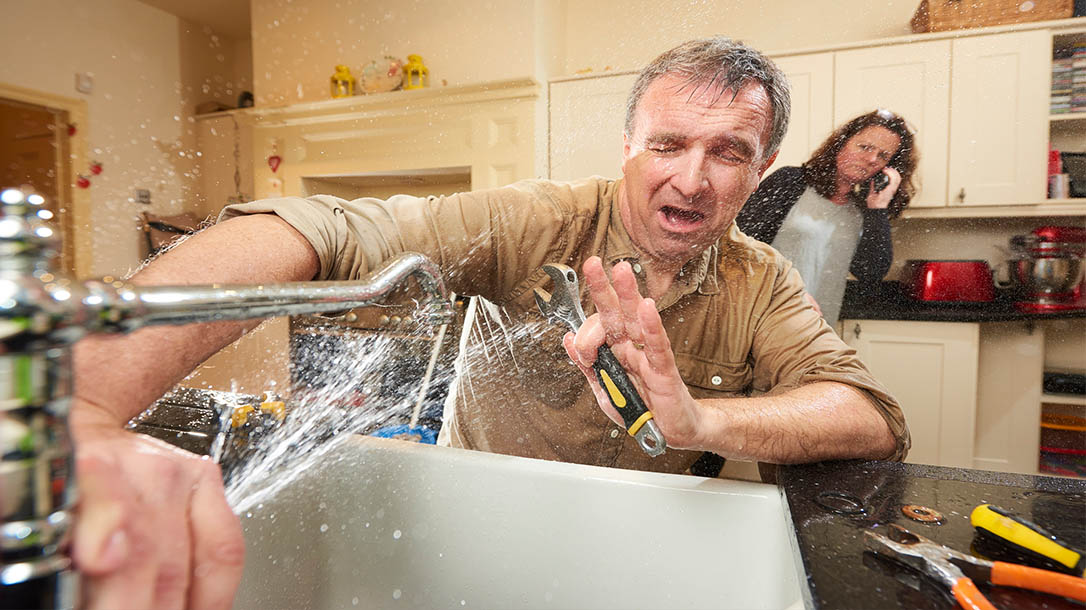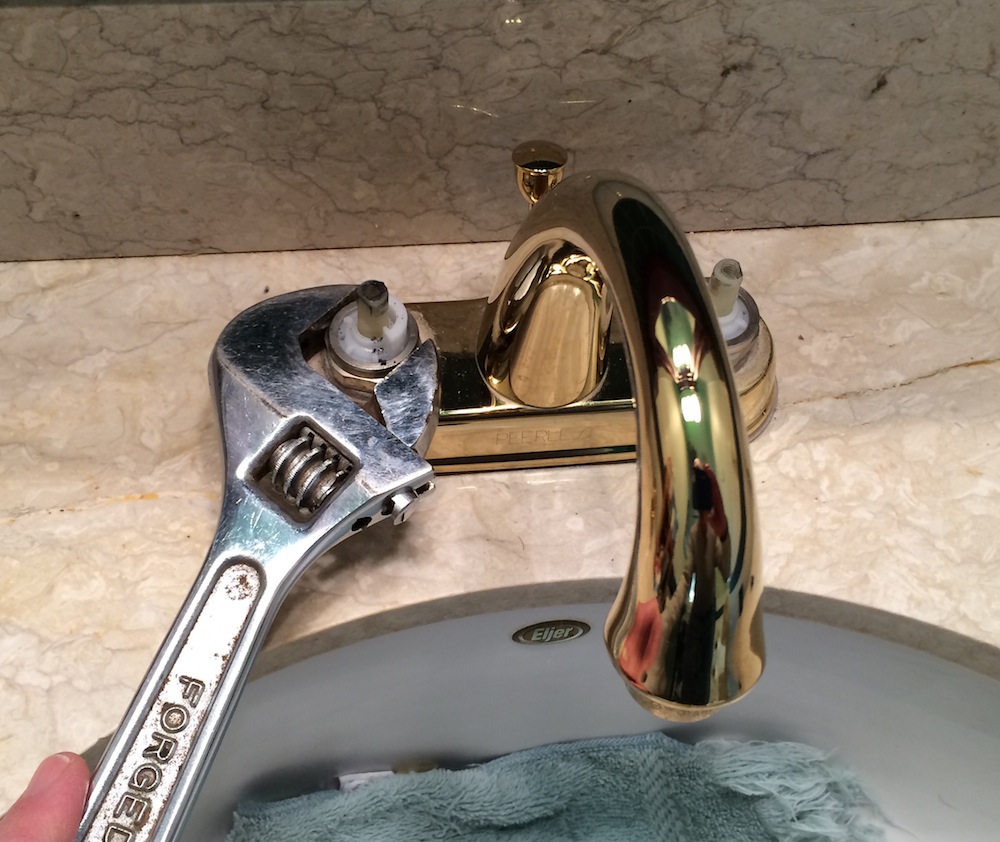The publisher is making a number of great points related to Leaky Faucets: Why They Happen & What to Do About Them overall in this content further down.

Dripping faucets could look like a minor aggravation, however their effect surpasses just the annoyance of the audio. From wasting water to incurring unneeded monetary costs and wellness dangers, ignoring a trickling faucet can bring about different consequences. In this post, we'll delve into why it's important to resolve this common house issue immediately and effectively.
Waste of Water
Ecological Impact
Dripping faucets add considerably to water waste. According to the Environmental Protection Agency (EPA), a single faucet trickling at one drip per secondly can throw away more than 3,000 gallons of water annually. This not just stress water sources yet likewise impacts environments and wild animals based on them.
Step-by-Step Overview to Taking Care Of a Dripping Tap
Tools Called for
Before trying to repair a trickling faucet, gather the necessary devices, including a flexible wrench, screwdrivers, replacement parts (such as washing machines or cartridges), and plumber's tape.
Typical Tap Issues and Their Solutions
Recognize the kind of tap and the particular problem creating the drip. Common problems include worn-out washers, corroded valve seats, or damaged O-rings. Describe manufacturer directions or on-line tutorials for step-by-step assistance on repair services.
Financial Costs
Enhanced Water Bills
Past the ecological influence, trickling faucets can blow up water costs considerably. The built up wastage over time converts into higher energy expenses, which might have been prevented with prompt fixings.
Prospective Building Damage
Additionally, prolonged dripping can cause damage to components and surface areas surrounding the tap. Water accumulation can trigger discoloration, deterioration, and even structural concerns if left neglected, resulting in extra fixing costs.
Health Worries
Mold And Mildew and Mildew Development
The consistent visibility of moisture from a trickling tap develops an excellent setting for mold and mildew development. These fungis not just jeopardize interior air top quality yet also posture health and wellness threats, especially for people with respiratory conditions or allergic reactions.
Waterborne Conditions
Stationary water in dripping taps can come to be a breeding place for microorganisms and other pathogens, boosting the threat of waterborne illness. Contaminants such as Legionella microorganisms thrive in stationary water, possibly resulting in severe health problems when ingested or breathed in.
DIY vs. Specialist Repair work
Advantages and disadvantages of DIY Repair Work
While some may attempt to fix a leaking tap themselves, do it yourself fixings include their own collection of difficulties. Without proper understanding and tools, do it yourself attempts can worsen the concern or result in insufficient repair services, lengthening the trouble.
Advantages of Working With an Expert Plumber
Hiring a specialist plumber ensures that the underlying root cause of the leaking tap is dealt with efficiently. Plumbing technicians have the experience and devices to diagnose and repair faucet issues successfully, conserving time and reducing the risk of more damage.
Ecological Responsibility
Individual Payment to Preservation
Taking duty for taking care of dripping taps aligns with more comprehensive efforts towards water conservation and environmental sustainability. Every individual's activities jointly make a significant effect on maintaining precious sources.
Sustainable Living Practices
By focusing on punctual repair services and taking on water-saving behaviors, people contribute to lasting living techniques that profit both present and future generations.
Preventive Measures
Regular Maintenance Tips
To avoid trickling faucets, do regular maintenance such as cleaning up aerators, checking for leakages, and changing damaged components without delay. Additionally, consider installing water-saving devices or updating to extra reliable components.
Value of Prompt Fixes
Attending to dripping taps as quickly as they're discovered prevents more water waste and potential damages, eventually saving both water and cash over time.
Influence On Home Worth
Assumption of Well-Maintained Residential Property
Keeping a building in good condition, consisting of resolving maintenance concerns like dripping faucets, enhances its regarded worth and value amongst potential purchasers or lessees.
Influence on Resale Value
Properties with well-kept plumbing fixtures, consisting of taps, command higher resale values in the real estate market. Dealing with trickling taps can add to a favorable perception during building inspections and arrangements.
Verdict
Attending to a leaking tap surpasses mere ease; it's a crucial step toward saving water, lowering monetary costs, and securing health and building. Whether via do it yourself fixings or expert assistance, doing something about it to take care of trickling taps is a tiny yet impactful method to advertise responsible stewardship of resources and contribute to a healthier, more lasting future.
How to Fix a Dripping or Leaky Faucet
A leaking faucet is one of the most common problems that homeowners encounter, but it being commonplace doesn’t make it any less annoying. The constant drip drip drip of a leaking bathtub faucet, showerhead, or sink tap can disturb your home’s serenity. Left neglected, a dripping faucet can also result in higher water bills and discoloration or mold growth in your sink or plumbing fixtures.
Fortunately, you don’t have to be a trained plumber to know how to stop a dripping faucet. With some basic tools, replacement parts, and a little patience, leaky faucet repair is a breeze. In this article, we’ll explain what causes dripping faucets and how you can fix them.
What Causes a Leaking Faucet?
Kitchen and bathroom faucets come in all manner of designs, but most involve some combination of valves, O-rings, seals, and washers. The O-ring is usually the weakest link, but any one of these pieces can wear down over time. Heat, moisture, temperature fluctuations, minerals, mold, and movement can contribute to warping and corrosion, breaking the watertight seal. This just comes with the territory of being a homeowner. Everything is always subject to wear and tear, and some component parts of your appliances and fixtures need to be replaced on occasion. At least replacement O-rings are cheap!
More rarely, dripping faucets can be a symptom of excessively high water pressure. Were this the case in your home, you would probably notice that the leak is not isolated to one faucet. Water pressure issues are harder to resolve on your own. We recommend contacting a professional plumber if you suspect your water pressure is too high.
How to Fix a Dripping Faucet
Pipe wrench or monkey wrench Allen wrench set Screwdrivers Old towel or rag Shut off the water.
Before you do anything, you need to turn off the water to keep from drenching your kitchen or bathroom. You should find a valve under the sink and against the wall. Once you’ve turned this valve, try turning the faucet on to confirm that the water source has been cut off.
If you can’t locate your local valve for the faucet you’re working on, you can always shut off the water to the house at the main valve. Of course, this will prohibit anyone from using the sinks, showers, or toilets while you’re working on the faucet that’s giving you trouble.
Plug or block the drain.
You’ll be disassembling the faucet and removing some small bits of hardware. Plug the drain with a stopper or rag to avoid the possibility of a small screw falling into your P-trap.
Take apart the faucet assembly.
There are several varieties of kitchen and bathroom faucets, each with its own manner of assembly. For detailed instructions on how to disassemble your faucet, you can refer to the fixture’s manual or contact the manufacturer. If you know whether you have a ball, disc, cartridge, or compression faucet, you can find detailed schematics online.
In general, you need to begin by removing the faucet handles. You might notice a small screw that you’ll need to remove with a screwdriver or Allen wrench. If you don’t see any visible securing hardware, it’s likely hidden under a decorative cap that can be unscrewed or popped off with flathead screwdriver.
Remove each piece methodically, consulting a schematic when necessary. Take notes or arrange the pieces in such a way to make it easier to correctly reassemble the faucet later.
Remove the cartridge.
Once you’ve removed the handles and securing hardware, you should be able to remove the valve cartridge or stem. Some cartridges will slide right out. Other faucet models will require you to loosen a nut with a pipe wrench before you can remove the valve stem.
Examine the exposed hardware.
With the cartridge or stem removed, inspect the component parts. Check the rubber O-rings for wear and tear. Also examine the seat washer for corrosion or other damage. These pieces are usually the responsible parties for a dripping faucet, but it’s worth inspecting the other component parts while you have the faucet disassembled.
Find replacement parts.
Once you’ve identified which faucet component has failed, find an identical replacement. Your local hardware store should have O-rings, seat washers, and other standard components in stock. If you have a luxury or uncommon faucet, you may have to contact the manufacturer for a replacement part.
It’s a good idea to take your old parts with you to the hardware store so you can compare them with the store’s inventory and be sure you’re purchasing the correct replacement.
Reassemble the faucet.
With your new parts in hand, reconstruct the faucet and handles. Don’t be tempted to overtighten screws or nuts. You might think this could create a better seal, but it can instead damage or bend a delicate part of the assembly and create a new problem for you.
Turn on the water and test the faucet.
The only thing left to do is test your work. Unplug the sink, turn the water back on, and try the faucet. Congratulate yourself on a job well done!
https://www.libertyhomeguard.com/how-to-fix-a-dripping-or-leaky-faucet/

As a serious person who reads on , I assumed sharing that editorial was a great idea. Sharing is caring. You just don't know, you will be doing someone a favor. Thanks a lot for your time. Revisit us soon.